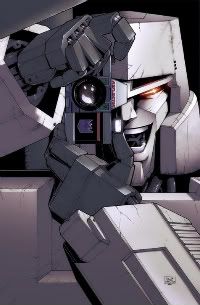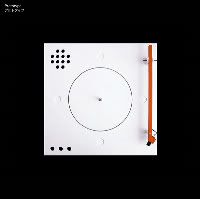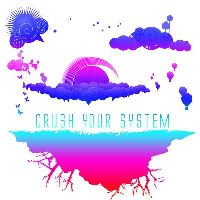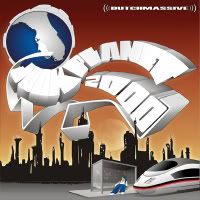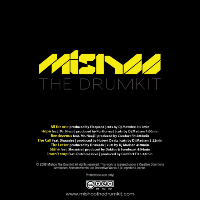Words from the HERO
Peace World, or at lease the 13,000 or so that Subscribe to this Online BLOGaZINE
This POST comes with A Little laughter, A Lesson, A for me A little Regret.
1st off, That Video of T-PAIN Clowning himself is Amazing. I just gained a lot more respect for that cat than I already had, but that was just super dope. AUTOTUNER is A Dope Tool that was USED out of Control and now is on EXTREME OVERKILL. People either HATE IT or LOVE IT. Personally, As A Emcee, Producer, Engineer...I feel that Autotuner is could be A extremely useful tool, and it can do a lot more than make that one signature sound. HOWEVER, All these kids going nuts trying to make they're tracks sound exactly like "T-Pain" is pretty Weaksauce.
- Infact -
To show you just how bad it is, I've turned this post into A Informative piece. Now, there are A Million and 1 Step by Step Tutorials on how to use the software to achieve that ROBO sound. So I went ahead and Copy and Pasted one I came across below the lines. Which I was Hesitate to do because I do NOT want to add to the problem. At the same time tho, I would like to educate the people who listen to music but don't really get into all the producer secrects and all that. Someone who might not ever think of the word "Software" in they're lives. I also posted A Little Vocoder History as well. Pretty much everything after these yellow lines I just Copy & Pasted for your learning Benefit =)
Before I let you guys get to all the technical stuff I wanna give you another AUTOTUNER parody joint from B.O.B. - ENJOY hahahaha
B.O.B. - AUTO TUNE
BONUS: B.o.B. - Auto Tune [MP3]
Aiight, now On to all the Edumacational Cut-N-Pasted Iddish.
HsH
___________________________
___________________________
Here’s an unofficial timeline of the computerized vocalizer that is invading mainstream music:
- 1970: The musical vocoder AKA “talking synthesizer” was invented by Wendy Carlos and Robert Moog and was featured on songs from the Clockwork Orange soundtrack
- 1970’s - 80’s: Vocoder is used as a special effect in many songs, most of which have a robot (Mr. Roboto) or futuristic theme. The effect is never a dominant aspect of a song (good!)
- 1996: 2pac’s ‘California Love‘ tops the charts and features a vocoded robot on the hook
- 1997: Auto-Tune is released and uses a type of vocoder to correct pitch in vocal and instrumental performances (translation: it makes your shitty voice sound on key with a slight computerized sound)
- 1998: Producers use Auto-Tune to frighten the world with Cher’s new sound in her hit single ‘Believe‘
- 1999 - 2004: Producers everywhere take note and use Auto-Tune to craft catchier hooks and improve lackluster vocals. See KCi & JoJo (’Crazy’), Daft Punk (’One More Time’), Madonna (lots), Britney Spears (ha!), Eiffel 65 (’Blue’), let me know more that come to mind…
- 2005: T-Pain releases his first single, ‘I’m Sprung‘, which features close to zero non-Auto-Tuned vocals. T-Pain releases his second single, ‘I’m In Luv With A Stripper‘, which showcases his lyricism, but still not his real voice
- Present:
A vocoder, IPA: [ˈvoʊkoʊdər] (a portmanteau of vox/voc (voice) and encoder), is an analysis / synthesis system, mostly used for speech in which the input is passed through a multiband filter, each filter is passed through an envelope follower, the control signals from the envelope followers are communicated, and the decoder applies these (amplitude) control signals to corresponding filters in the (re)synthesizer
Musical history
In 1970, electronic music pioneers Wendy Carlos and Robert Moog developed one of the first truly musical vocoders. A 10-band device inspired by the vocoder designs of Homer Dudley, it was originally called a spectrum encoder-decoder, and later referred to simply as a vocoder. The carrier signal came from a Moog modular synthesizer, and the modulator from a microphone input. The output of the 10-band vocoder was fairly intelligible, but relied on specially articulated speech. Later improved vocoders use a high-pass filter to let some sibilance through from the microphone; this ruins the device for its original speech-coding application, but it makes the "talking synthesizer" effect much more intelligible.
Carlos and Moog's vocoder was featured in several recordings, including the soundtrack to Stanley Kubrick's A Clockwork Orange, in which the vocoder sang the vocal part of Beethoven's "Ninth Symphony". Also featured in the soundtrack was a piece called "Timesteps," which featured the vocoder in two sections. Originally, "Timesteps" was intended as merely an introduction to vocoders for the "timid listener", but Kubrick chose to include the piece on the soundtrack, much to the surprise of Wendy Carlos.[citation needed]
Kraftwerk's "Autobahn" was the first rock song to include the vocoder. Another of the early songs to feature a vocoder was "The Raven" on the 1976 album Tales of Mystery and Imagination by progressive rock band The Alan Parsons Project; the vocoder also was used on later albums such as I Robot. Following Alan Parsons' example, vocoders began to appear in pop music in the late 1970s, for example, on disco recordings. Jeff Lynne of Electric Light Orchestra used the vocoder in several albums such as Time (featuring the Roland VP-330 Plus MkI). ELO songs such as "Mr. Blue Sky" and "Sweet Talking Woman" both from Out of the Blue (1977) use the vocoder extensively. Featured on the album are the EMS Vocoder 2000W MkI, and the EMS Vocoder (-System) 2000 (W or B, MkI or II).
Pink Floyd made extensive use of the vocoder on the album Animals, even going so far as to put the sound of a barking dog through the device. Another example is Giorgio Moroder's 1977 album From Here to Eternity. Vocoders are often used to create the sound of a robot talking, as in the Styx song "Mr. Roboto". It was also used for the introduction to the Main Street Electrical Parade at Disneyland. The hard rock/metal band Avenged Sevenfold also used this effect for portions of the vocals on the song "Lost" from their self-titled album, released in 2008.
Vocoders have appeared on pop recordings from time to time ever since, most often simply as a special effect rather than a featured aspect of the work. However, many experimental electronic artists of the New Age music genre often utilize vocoder in a more comprehensive manner in specific works, such as Jean Michel Jarre (on Zoolook, 1984) and Mike Oldfield (on Five Miles Out, 1982). There are also some artists who have made vocoders an essential part of their music, overall or during an extended phase. Examples include the German synthpop group Kraftwerk, jazz/fusion keyboardist Herbie Hancock during his late 1970s disco period, the synth-funk group Midnight Star during the mid 1980s, French jazz organist Emmanuel Bex, Patrick Cowley's later recordings and more recently, avant-garde pop groups Trans Am, Black Moth Super Rainbow, Daft Punk, ROCKETS, The Medic Droid, electronica band The Secret Handshake, the Christian synthpop band Norway, as well as metal bands such as Vandal Known as Myth, At All Cost and Cynic, and electronica/progressive band I See Stars and Breathe Carolina
Madonna often uses Vocoders for her albums and concerts including her 2001 Drowned World Tour, 2004 Re-Invention Tour, 2006 Confessions Tour, and her Sticky & Sweet Tour.
Recently Imogen Heap used a vocoder on her song "Hide and Seek". She plays full chords through her vocal without acompaniment. Anathema used a vocoder for singer Vincent Cavanagh in the song Closer from the A Natural Disaster (2003) album.
Other users of the vocoder include Prince, George Clinton, the late Roger Troutman, and Teddy Riley.
Other voice effects
- See also: Robotic voice effects
"Robot voices" became a recurring element in popular music during the late twentieth century. Several methods of producing variations on this effect have arisen, of which the vocoder remains the best known and most widely-used.[citation needed] The following other pieces of music technology are often confused with the vocoder: the Talk box (Sonovox), Auto-Tune, Linear predictive coding, Ring modulation, Speech synthesis and Comb filter.
How to Autotune Your Vocals Like T-Pain, Cher or Daft Punk
You may assume that it takes a masterful engineer and a lot of money in hard effects to get that autotuned sound, but that's not the case: using only a few steps and a simple plugin you will be well on your way. In this tutorial we'll go one step further and show you how to create an autotuning effect that sounds as good as the pros.
This tutorial assumes basic knowledge of VST effects and FL Studio. You will need Antares AutoTune VST or a similar autotuning VST to perform this effect correctly, and of course, a microphone that is able to record into FL Studio. Besides that plugin, I will be using the effects packaged with FL Studio to finish shaping the sound.
Tutorial Setup:
- iMac Core2Duo 2.16ghz
- 2GB Ram
- Audio Technica ST90 Microphone ($25!!)
- Alesis IO 26
Step 1
We are going to setup a mixer channel in FL Studio to pickup our microphone. Mine is on Blobusound Channel 2, so I select that accordingly.
If done correctly, you should have activity on the input meter. If not, you're going to need to check your ASIO/WDM settings, or make sure that you have a soundcard or interface that can support a microphone input.
Assuming you have activity coming in and that you can hear yourself, load Antares AutoTune onto the first slot of the mixer. Notice any difference? You probably can't--we need to change some settings before going further.
This is the raw vocal I'll be working with in this tutorial:
raw_vocal.mp3
Step 2
With the input type changed, it is now time to change the key and scale. T-Pain's hit song 'Buy U A Drank' is in B-flat minor, so we'll change the key to B-flat and the scale to minor.
You may notice some difference here, but the key to real auto-tuned vocals is to change the "Retuning" threshold to as fast as possible, in this case "0." With it down at zero, when your voice fluctuates from note to note, it detects what note your voice is in, then jumps it to the next note in the scale, keeping it in key. With these basic settings in place, you should be singing your robotic heart out.
vocal_autotuned.mp3
But this is just the basic effect, and through my $25 Audio Technica mic, it is sounding a little dry.

Step 3
vocal_autotune_eq.mp3
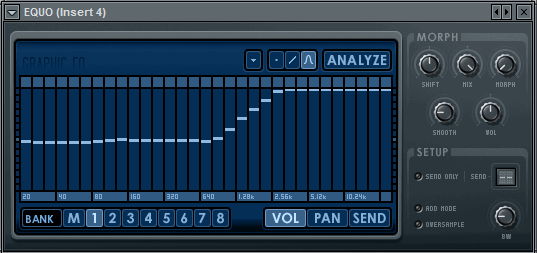
Step 4
vocal_autotune_eq_reverb.mp3
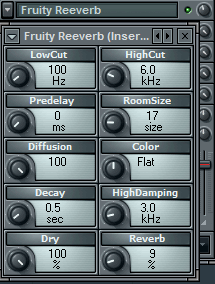
Step 5
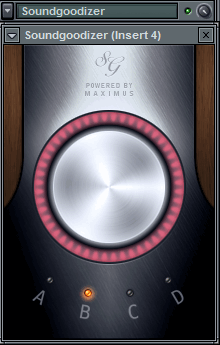
Step 6
vocal_autotune_eq_reverb_chorus.mp3
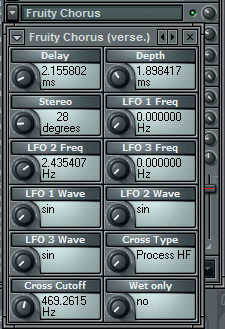
Step 7
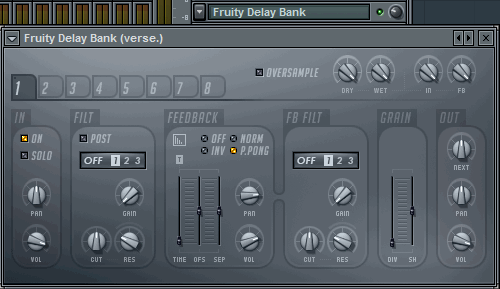
Listen to the final product:
vocal_autotune_eq_reverb_chorus_delay_compression.mp3
Download the Play Pack for this tutorial (1.4MB)
- All audio files
- Printable PDF tutorial
- Bonus audio: autotuned vocal acappella.
___________________
How this does more good than damage haha
The Hobbyshop HERO








